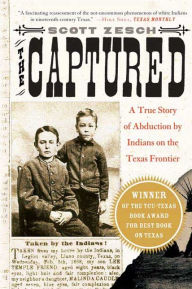Mary Brave Bird grew up fatherless in a one-room cabin, without running water or electricity on a South Dakota reservation. Rebelling against the aimless drinking, punishing missionary school, narrow strictures for women, and violence and hopelessness of reservation life, she joined the new movement of tribal pride sweeping Native American communities in the sixties and seventies and eventually married Leonard Crow Dog, the movement's chief medicine man, who revived the sacred but outlawed Ghost Dance.
Lakota Woman
Paperback
(Reprint)
- ISBN-13: 9780802145420
- Publisher: Grove/Atlantic, Inc.
- Publication date: 06/14/2011
- Edition description: Reprint
- Pages: 272
- Sales rank: 73,105
- Product dimensions: 5.40(w) x 8.10(h) x 0.80(d)
Choose Expedited Delivery at checkout for delivery by. Tuesday, October 15
Mary Brave Bird grew up fatherless in a one-room cabin, without running water or electricity, on the Rosebud Indian Reservation in South Dakota. Rebelling against the aimless drinking, punishing missionary school, narrow strictures for women, and violence and hopeless of reservation life, she joined the new movement of tribal pride sweeping Native American communities in the sixties and seventies. Mary eventually married Leonard Crow Dog, the American Indian Movement's chief medicine man, who revived the sacred but outlawed Ghost Dance.
Originally published in 1990, Lakota Woman was a national best seller and winner of the American Book Award. It is a unique document, unparalleled in American Indian literature, a story of death, of determination against all odds, of the cruelties perpetuated against American Indians, and of the Native American struggle for rights. Working with Richard Erdoes, one of the twentieth century's leading writers on Native American affairs, Brave Bird recounts her difficult upbringing and the path of her fascinating life.
Customers Who Bought This Item Also Bought
-
- The Killing of Crazy Horse
- by Thomas Powers
-
- The Wolf at Twilight: An…
- by Kent Nerburn
-
- Trail of Tears: The Rise and…
- by John EhleEhle
-
- Ways of My Grandmothers
- by Beverly Hungry WolfBeverly Hungry Wolf
-
- Narrative of Sojourner Truth…
- by Sojourner TruthImani Perry
-
- Indian Givers: How Native…
- by Jack Weatherford
-
- Captured: A True Story of…
- by Scott Zesch
-
- There Are No Children Here:…
- by Alex Kotlowitz
-
- The Purity Myth: How…
- by Jessica Valenti
-
- Whistling Vivaldi: How…
- by Claude M. Steele
-
- I Have a Dream: Writings and…
- by Martin Luther King Jr.James M. WashingtonCoretta Scott King
-
- When I Was Puerto Rican: A…
- by Esmeralda Santiago
-
- Crazy Horse and Custer: The…
- by Stephen E. Ambrose
-
- Custer's Fall: The Native…
- by David Miller
-
- Empire of the Summer Moon:…
- by S. C. Gwynne
Recently Viewed
“Inspirational.”— The Midwest Book Review
“A gritty, convincing document of one woman’s struggle to overcome poverty and oppression in order to live in dignity as an American Indian.”— Kirkus Reviews
“ Lakota Woman is a view from the inside.”— San Francisco Chronicle
“A powerful autobiography … feisty and determined, warm and even funny, sometimes given to outbursts of rage or sorrow or enthusiasm, always unpretentious and straightforward.” — Chicago Tribune
“Stunningly honest …. The courage, nobility, morality, and humor that fill the pages of this book should be required reading.” —David Amram
“The moving story of a Native American woman who fought her way out of despair and bitterness to find the righteous ways of her ancestors.”—William M. Kunstler
“A piercing look into the ancient yet modern mind of a Sioux woman.” —Oliver Stone
“Her searing autobiography is courageous, impassioned, poetic, and inspirational.” — Publishers Weekly















